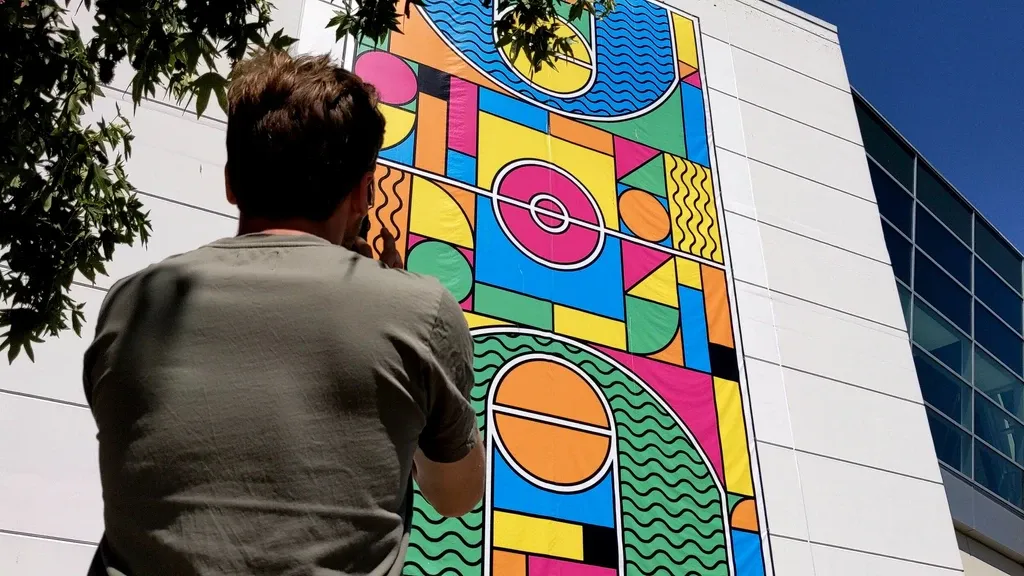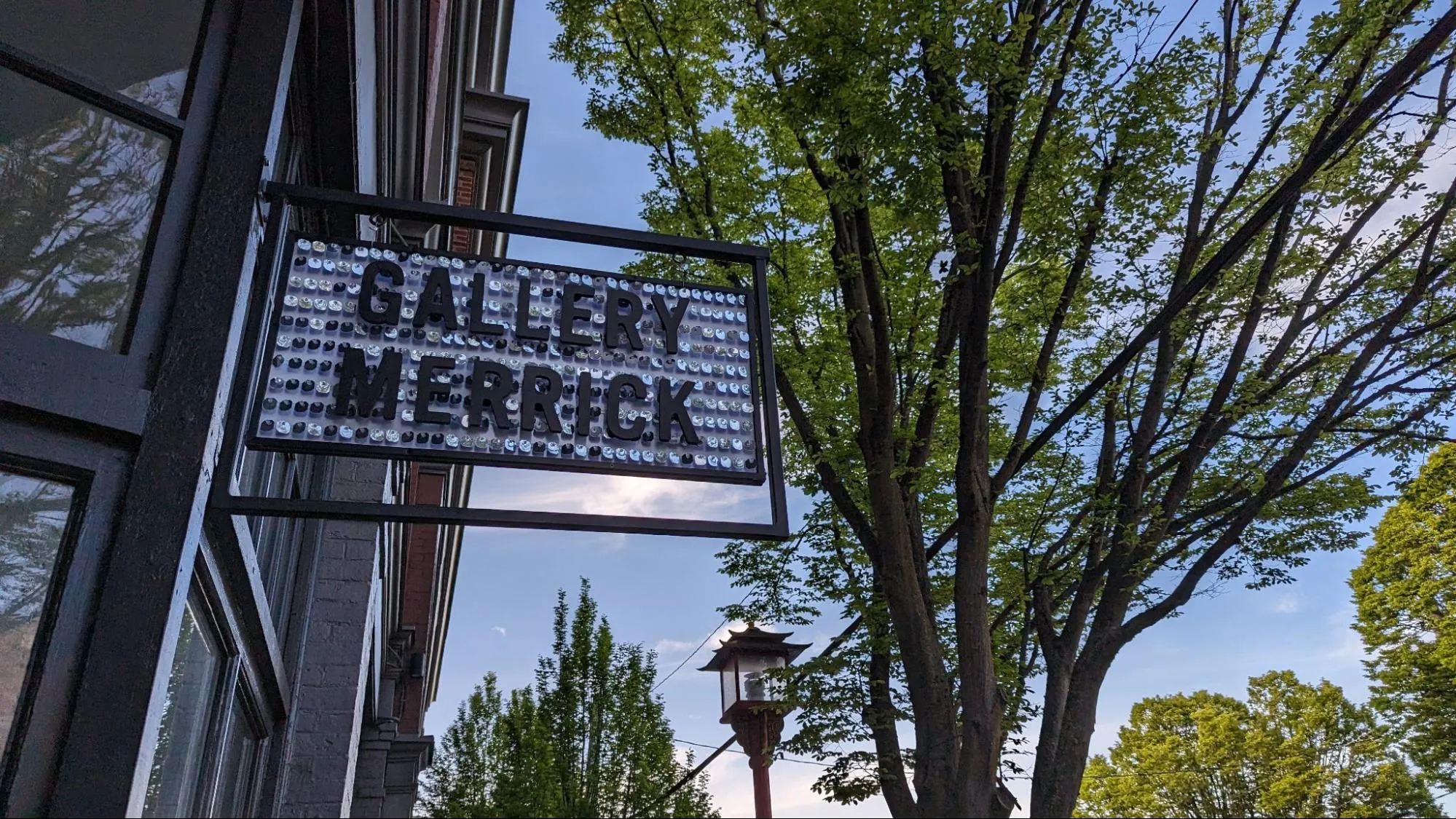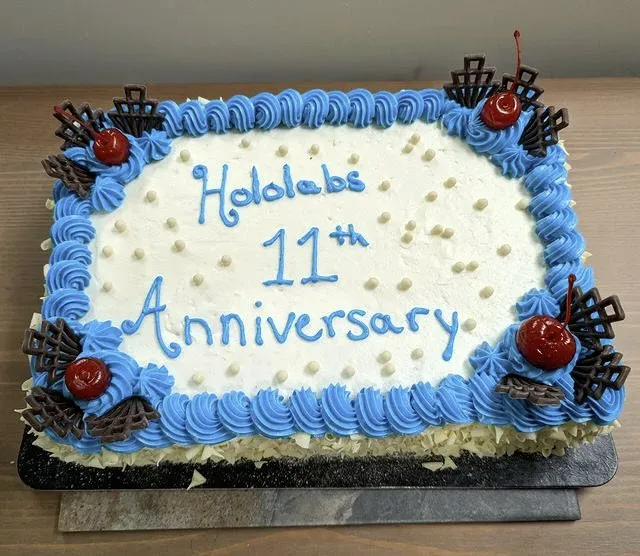
Creating Outside the Lines: An Interactive Mural
Creating an AR mural for the We The West Basketball Festival.When the team behind the We The West Basketball Festival approached us about creating a giant augmented reality mural as part of the festival, we knew immediately that we wanted to be involved. This project had all of the elements that get us excited as creators: a wide audience, room for creativity and experimentation, and interesting technical challenges to overcome.
Our client requested that we use Spark AR as the technology for this experience, after seeing the success that it had garnered at the Vancouver Mural Festival. We started researching Spark AR to try to determine the benefits and limitations of the technology. We had many questions to answer about Spark. Most notably, “Will it work on a 40 foot high mural?”, and “How good is it for interactivity?”. While Spark does have a few limitations in terms of capabilities, it shines when it comes to accessibility because effects made in Spark can be viewed on nearly any mobile device via Instagram and Facebook. We knew that most people walking by the mural would already have what they need to experience our effect, which is ultimately what made Spark an excellent choice for this project.
We got to work and started building a prototype to test the limitations of the technology. Our first experiment for the mural was a rather straightforward basketball game. The user would point their phone at the wall, a basketball net would appear, and they could shoot balls towards the hoop by swiping their screen.
This first free-throw prototype was fun, but ended up feeling somewhat wrong at the 20x40 foot scale and it was unclear how this type of game could be incorporated into the final mural design. We met with the team, shared our experiment, and started talking about different directions we could take with the mural. By this point, the imagery in the mural was starting to come together. Graphic designer Samantha Paul had provided an early concept of what would become the final “geometric court” design for the mural. Right away, the design got us excited - we saw so much potential in the geometric shapes in the mural. The We The West team wanted the mural to feel like it was “coming alive”, and this new design lent itself perfectly to that.
Visions of geometric shapes were dancing in our heads. We decided to build an “AR Toy” with puzzle-like elements to invoke play, exploration, discovery, and of course, basketball. We started talking about the pieces of the mural in different ways, asking questions like: “What if these pieces were 3D blocks?”, “What if these squiggly pieces were water?”, “What if these pieces were tied to the music?”. Our goal was to create an experience that would feel whimsical - more like a toy than a video game - so everyone who took the time to try the experience discovered something fun. Soon after, we had more ideas than pieces in the mural.
We started prototyping some of these ideas to see which felt most fun and surprising. A main feature became the bounce puzzle where guests would have to pop out shapes for a basketball to bounce off in order to score a basket. Music also became a feature of experience turning some parts of the mural into a mixing board that allowed guests to layer their own beats. And most importantly, we leaned into our biggest advantage using augmented reality, adding depth with 3D objects. Marine life and west coast themes extrude from the surfaces of the mural, while basketballs and shapes traverse the large volume of space in front of the mural toward the guest. Guests also discover a depth behind the mural by smashing the shapes at center court revealing a world beyond. We wanted to ensure that everyone who took the time to interact with the mural would walk away feeling like they had a complete experience, whether they had just tapped a few different things, or whether they fully explored each piece of the mural in completionist style.
As the final form of the experience began to take shape, we really felt that the direction we chose was delivering on the feeling that we were chasing. The day the mural went up, we were nervous and excited. Would it work at this scale? Would the mural be too glossy for tracking to work properly? Would people be able to open the experience on their devices? To our delight, all of the major pieces just clicked. We made some final tweaks for lighting and accessibility, and invited some volunteers to come try it. After a bit of troubleshooting, we had everyone up and running. The volunteers just “got it” and hearing their feedback, we feel like we delivered on the vision. Now that the festival has begun, we’re looking forward to opening this experience up to the thousands of fans who will pass by the mural. We’re hoping it’s a slam dunk.




